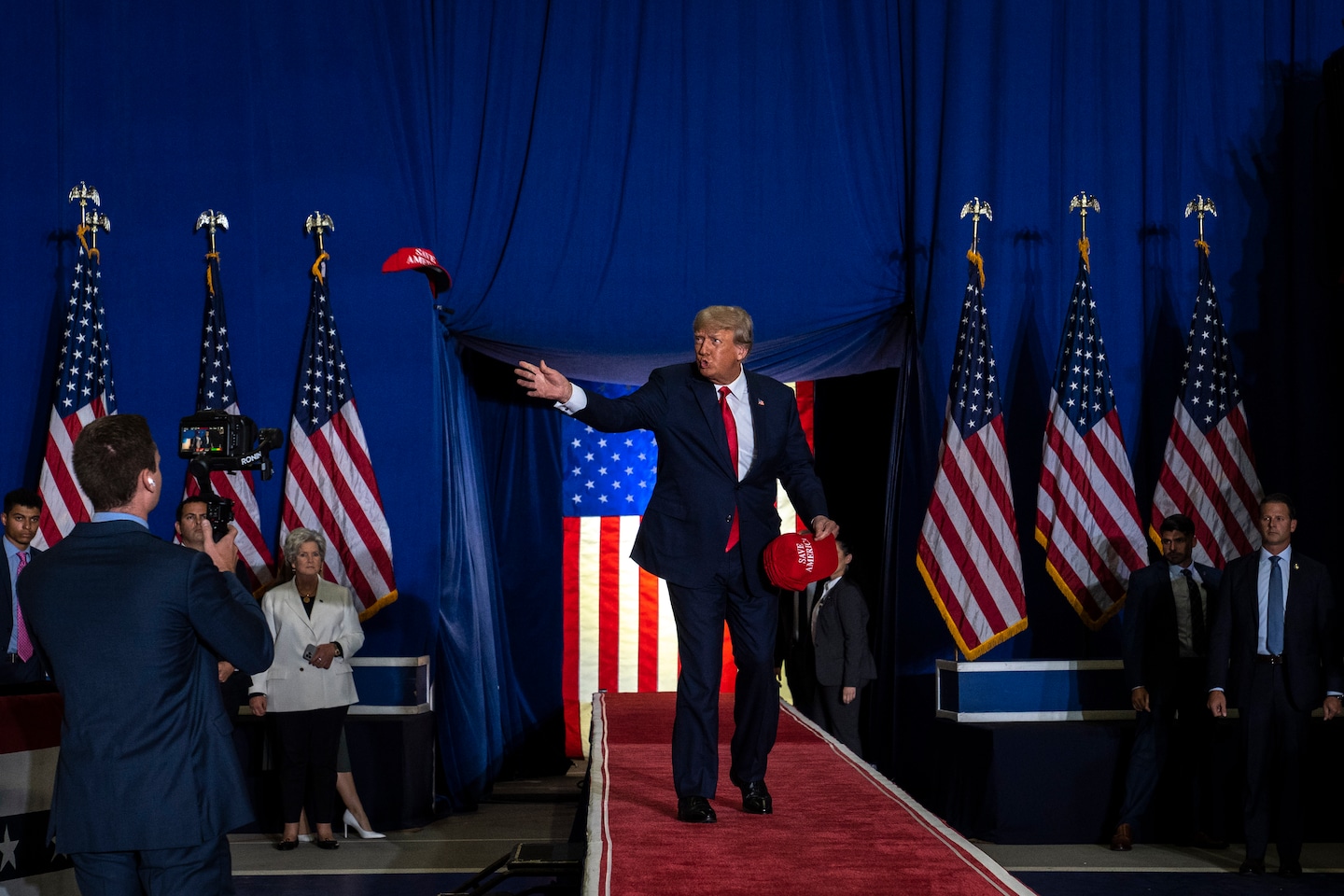Perspective | The QAnon ‘anthem’ is a familiar sales tool — with strings attached

Will Van De Crommert, the composer of “Mirrors” (its actual title), told NBC News he was “exploring legal options” after discovering that the track had been improperly used by Trump and other parties sans licensing or permissions. “Mirrors” can still be heard on SoundCloud.
In an email to NBC, Van De Crommert acknowledged that the track was available for licensing but disavowed any connection to QAnon or its, how shall I put this, perspective on reality: “I however was not notified of any licenses for political rallies, nor did I authorize such use.”
Washington Post reporters have described “Wwg1wga”/“Mirrors” as “an orchestral theme featuring swelling strings, gentle bell tones and brooding piano harmonies,” suffused with a “gloomy spooky mood.”
A Post music critic, meanwhile, has been struggling with the material. Not for any lack of terms or ways to describe “Mirrors” — a morose, musical all-purpose flour, the kind of stock sentimental, algorithmically emotional pablum regularly employed to sell us trucks, insurance, petrochemicals, diapers, more trucks, pharmaceuticals, whole-grain bread and presidents.
It’s not hard to figure out why this music so quickly enraptured a demographic of deep listeners fixated on dispatches from a shadowy puller of sub-government levers. It sounds utterly anonymous.
So why does this stuff work? How does the most generic music imaginable inspire tens (if not hundreds) to throw their hands in the air and do whatever the hell that was?
It could be that what pulls our strings are the strings themselves.
Stringed instruments, with their capability for sweeping legato movement between pitches, are the instruments most akin to the human voice, and thus most relatable and sympathetic to our innermost vibrations. (That is, they can sound fretful precisely because they are fretless.)
A cello can seem to sing or mourn in the hands of the right player, its body a great torso of spruce and maple. Even the barely audible rasp of the bow’s hair across a string can conjure the intimate shape of a last breath.
And while digitally sampled strings and reverb-drenched production significantly dull these special acoustic effects, the associations we’ve long drawn between strings and all things sad, somber and serious are cauterized into our cultural consciousness. People don’t collectively point to Samuel Barber’s “Adagio for Strings” as the undisputed saddest music ever because we all got dumped by the same guy. Rather, there’s something about the sound itself.
In a recent study, researchers from the Hong Kong University of Science and Technology tried to determine how the emotional characteristics of bowed string instruments changed with variations in pitch and dynamics. They found that such emotional characteristics as heroic, angry and sad were associated with lower pitches, while those such as heroic, angry and scary were stronger with loud notes. Right away, this seems like a rough recipe for the cloying mystery punch of “Mirrors,” with its falling violins, swelling cellos and streaky-windowed minor-key melodrama.
Another study, from 2018, found that “stand-alone musical instrument timbre could be similar to speech in triggering meaningful emotional connotations” — that is, a violin will almost always sound like it’s in a worse proverbial mood than, say, a marimba. Accordingly, the teardrop piano accents and pillow-soaking strings of “Mirrors” wring every timbral trope bone dry.
Music stretched beyond meaning finds utility in ubiquity: You could imagine “Mirrors,” for instance, scoring a commercial about a family who feels amazing about its choice of bank. You could imagine it playing as a slow-blinking cowboy looks out over his ranch from a high bluff and thinks satisfied thoughts about his extended powertrain warranty. “Mirrors” could be a song about the pain of abject loneliness or the rich aroma of arabica beans.
[embedded content]
Trying to describe “Mirrors” feels like describing a mirror in a hall of mirrors; it’s music that can reflect essentially whatever you stick in front of it.
If you’ve spent any time on TikTok, you know that stock music has fast become part of the language we speak online — a lexicon that extends beyond words into GIFs, filters, effects, emoji, memes and music.
A humdrum breakup video can now acquire new depths of postproduction pathos with 15 seconds of a Hans Zimmer score dragged and dropped onto it. Apology videos are routinely made more sincere and confessions more salacious by the addition of a soundtrack. Canned strings and sickly pianos score thousands of clips desperate to be taken more seriously. Stock music offers a quick and effective way to imbue any scrap of social media with a jolt of much-coveted main-character energy.
Perhaps this is why it is so unsettling to observe this kind of manipulative stock music so insipidly deployed into public space at those rallies — a brazen and tacky attempt to pipe the pure artifice of the internet into what’s left of the real world.
For a minute or so, the music turns reality into an ad for a cheaper alternative, and everyone within earshot is buying it. Who needs strings to feel sad about that?
This article has been archived for your research. The original version from The Washington Post can be found here.


